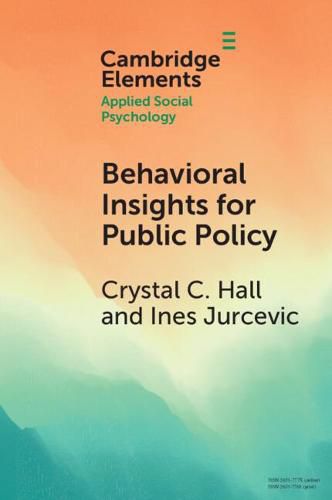Readings Newsletter
Become a Readings Member to make your shopping experience even easier.
Sign in or sign up for free!
You’re not far away from qualifying for FREE standard shipping within Australia
You’ve qualified for FREE standard shipping within Australia
The cart is loading…






There has been an increasing effort to integrate behavioral insights into public policy. These insights are often reliant on social psychological research and theory. However, in this relatively young field, policy interventions and behavioral insights are often built on laboratory-based psychological research with effects that can prove to be unstable in the ‘real world’. In this Element, the author provides a brief history of how behavioral insights have been applied to complex policy problems. The author describes ways in which behavioral insights have been successful and where they have fallen short. In addition, the author examines unintended negative consequences of nudges and provides a more nuanced examination of their impacts on behavior change. Finally, the author concludes with a set of recommendations for generating more effective practical applications of psychology to the field of public policy.
$9.00 standard shipping within Australia
FREE standard shipping within Australia for orders over $100.00
Express & International shipping calculated at checkout
There has been an increasing effort to integrate behavioral insights into public policy. These insights are often reliant on social psychological research and theory. However, in this relatively young field, policy interventions and behavioral insights are often built on laboratory-based psychological research with effects that can prove to be unstable in the ‘real world’. In this Element, the author provides a brief history of how behavioral insights have been applied to complex policy problems. The author describes ways in which behavioral insights have been successful and where they have fallen short. In addition, the author examines unintended negative consequences of nudges and provides a more nuanced examination of their impacts on behavior change. Finally, the author concludes with a set of recommendations for generating more effective practical applications of psychology to the field of public policy.